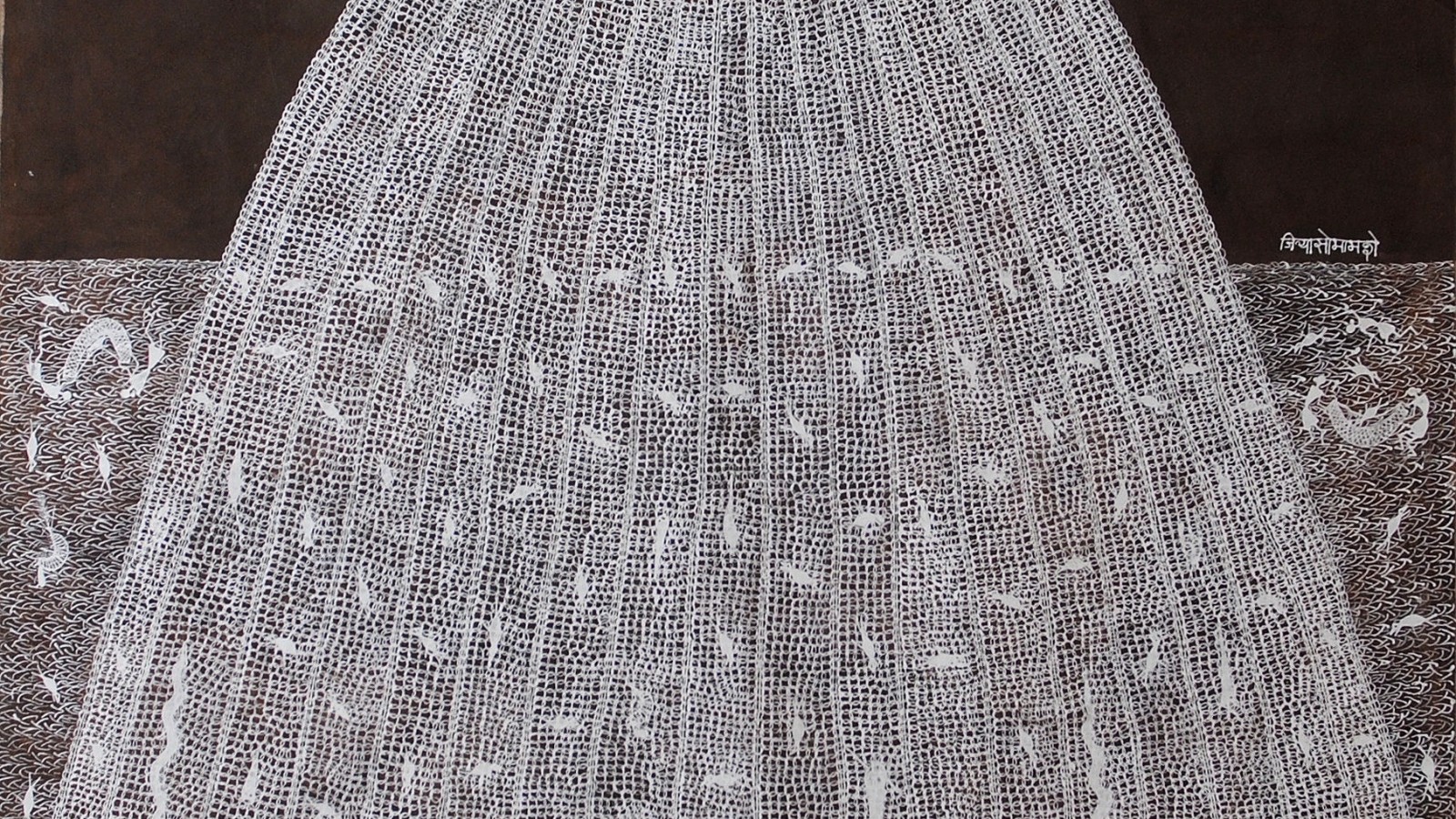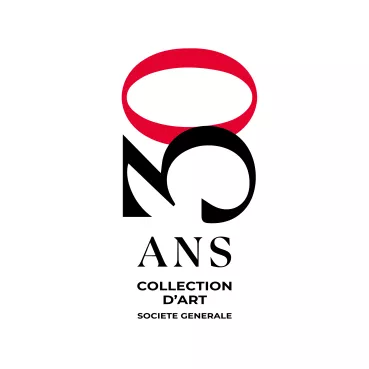
The remarkable story of Warli art !
Popularised by the indigenous artist Jivya Soma Mashe (whose work recently joined the Societe Generale Collection in 2015), Warli painting is now spreading beyond the borders of India. A return to a tribal art with its origins in rock painting, its contemporary form allies tradition and innovation, simplicity and virtuosity.
Less well-known than its counterpart in Australia, Indian indigenous art is most clearly embodied in Warli painting, with its famous white pigments against a red background. An ethnic group from the state of Maharashtra (150 km north of Mumbai), the Warlis are descended from the first inhabitants of the Indian peninsula, the Adivasi. Today they number about 300,000, living together in small villages and subsisting on livestock farming, fishing and agriculture. With their animistic beliefs, they venerate nature, which they honour through a ritual practice of drawing.
From huts to canvases
Traditionally, Warli painting was not meant to be contemplated or preserved. It began in the shadows of mud-brick huts, done by women at weddings to ensure stable marriages. The women would sing and draw directly on the walls using bamboo sticks onto which a mixture of white rice paste, water and gum had been applied, with a combination of cow dung and earth serving as a solid background. Once the ceremony was over, these drawings, with their codified and rudimentary iconography, would fade away naturally. Paintings were also done at births and to protect crops and houses from evil spirits. These were always done as part of a ritual - the act and time of the painting took precedence over the look of the final image and any aesthetic considerations.
But in the 1970s, Warli art underwent a remarkable transformation under the joint impetus of the Indian government, which decided to promote its indigenous heritage, and Jivya Soma Mashe (born 1934), the first man to dedicate himself to this exclusively feminine art. Other artists followed in his footsteps, enabling the Warli community to develop a new source of income. Now portrayed on canvas, Warli painting has lost its ephemeral and votive character, although it still maintains the spirit of an ancestral tradition. Acrylic now supplements the natural materials used. This expansion of Warli art has led to it being shown in Paris (for exhibitions at the Musée du Quai Branly and the Fondation Cartier in 2010 and 2012) and Lyon, where one of its greatest representatives of the present day, Shatanram Tumbda, painted a colossal fresco on the front of the Musée Urbain Tony Garnier. Having given up this practice which was originally their domain, women are increasingly regaining their place alongside the male artists.
Stories told through circles, triangles and squares
Wassily Kandinsky dreamed of points and lines; Cézanne dedicated himself to the sphere and the cone. Warli artists, for their part, paint in an endless variety of three simple geometric shapes: the circle (inspired by observations of nature), the square (indicating a sacred enclosure) and the triangle (used to represent the human body: a triangle pointing down for the torso, one pointing up for the pelvis). Perspective is absent - instead, the viewer sees a palette limited to two colours and a flat surface where figures drift about, resembling pictograms. Distance serves to indicate time. In this respect, nothing has changed for centuries. The stylised vocabulary of Warli painting is animated by a network of broken lines giving the impression of movement. It is time-consuming, minutely detailed work used to tell a mythological tale appealing to earthly and heavenly powers.
In addition to the traditional motifs – divinities and day-to-day scenes of women nursing, men cultivating rice fields, etc. – elements of modern life are now seen more frequently, such as the arrival of trains in the region and the discovery of air travel, painted with humour by Shatanram Tumbda. Painters integrate protective spirits (the sun, the rain) into their own dreams and stories. The tiger god, called upon to protect livestock, is seen alongside the peacock god, a symbol of prosperity, or the five-headed horseman god. At the centre of the canvas, within an elaborate square (the caukat or cauk), the mother-goddess of fertility, Palaghata (identifiable by her root-limbs, which look like simplified rakes), or her avatar, the tree of life, Banyan, has pride of place. Often, figures are seen dancing to the sound of the tarpa (a wind instrument with a curved end) in a spiral shape, celebrating the harmony between humanity and the forces of the cosmos. For although each being has a defined space on the canvas, everything remains inextricably linked to these tribal painters: the world is in symbiosis with nature.
Caught in the snares of Jivya Soma Mashe
Jivya Soma Mashe, the father of contemporary Warli art, has become known for his paintings portraying fishing nets - enormous domes of white lace taking up almost the entire canvas. In 2015, Societe Generale acquired one of his works, Fishnet, for its Collection. At the top of the net (enlarged to the size of a hut or celestial sphere), the viewer can just make out a fisherman, focused on his task. The disproportion suggests the fragility of humans in the face of the immense ocean. Below, the water teems with fish. Nature, while terrifying, can also be generous. The waves cause the canvas to shimmer. "Day and night, there is movement. Life is movement," says Jivya Soma Mashe, a fitting spokesman for the creative dynamism of the Warli culture.


